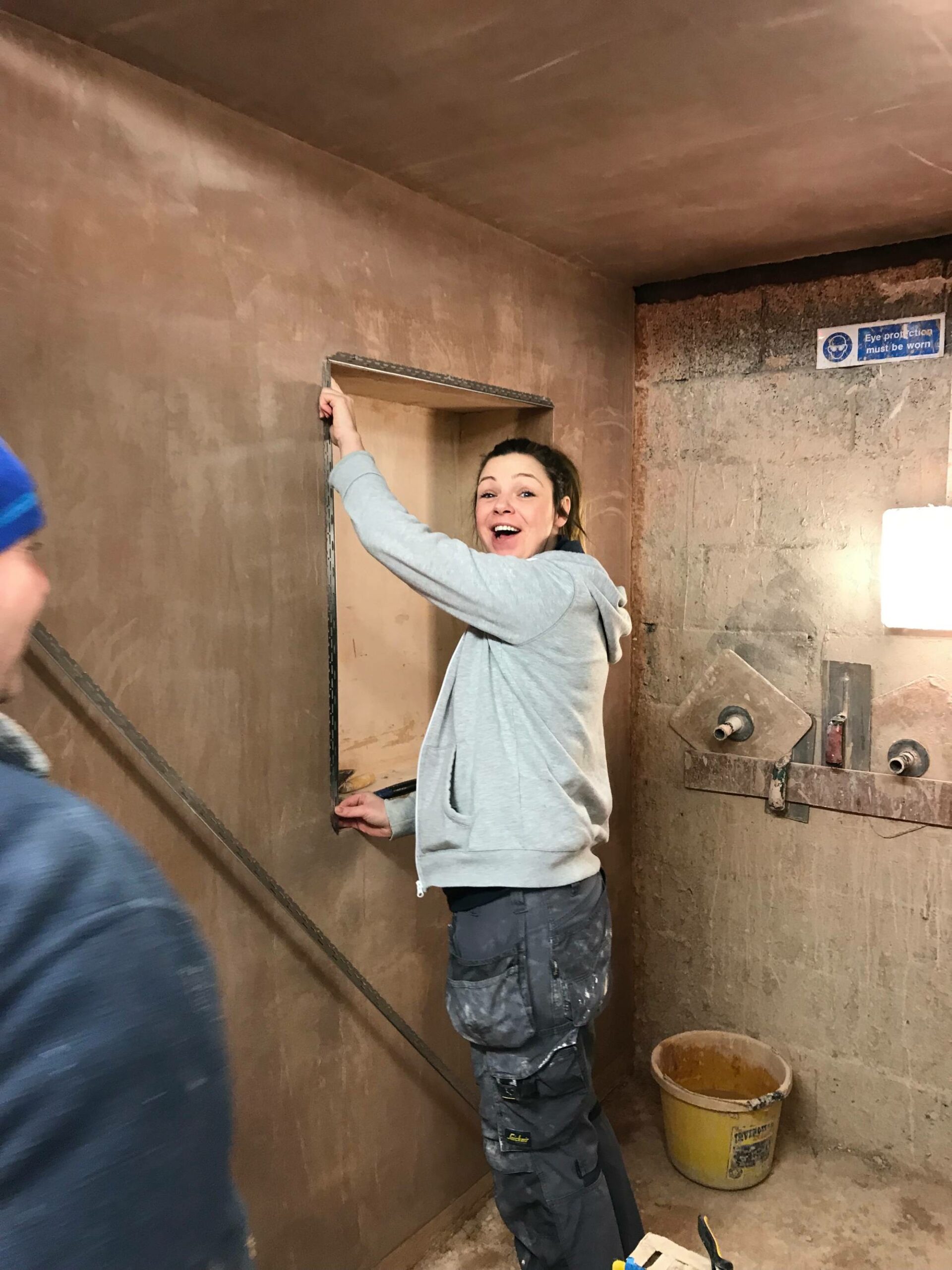Crucial Tools and Methods for Professional Plastering in the house
Crucial Tools and Methods for Professional Plastering in the house
Blog Article
Secret Tips and Tools for Successful Smudging in Your Home Renovation Endeavors
Accomplishing a perfect plaster surface in your home enhancement tasks needs a mix of the right devices and tested techniques. Vital carries out such as the hawk and trowel are important for effective application, while correct surface prep work lays the foundation for success. Furthermore, comprehending the nuances of mixing plaster and using it in slim layers can dramatically affect the final end result. As we explore these basic aspects, it becomes obvious that staying clear of usual pitfalls can boost your plastering abilities-- guaranteeing your following job not just fulfills however exceeds expectations.
Crucial Gluing Devices
A plasterer's toolkit is essential to achieving a resilient and smooth surface on wall surfaces and ceilings. The necessary devices include a selection of executes developed to facilitate the gluing procedure successfully and effectively. Trick components include a hawk, which is a flat, square tool used to hold the plaster while applying it to surfaces. This tool permits simple transport and application of the product.

Furthermore, a mixing pail is needed for preparing plaster, making sure the appropriate uniformity before application (Plastering). With each other, these crucial plastering devices enable both experts and DIY fanatics to attain top quality results in their smudging projects.
Surface Area Preparation Methods
Correctly preparing the surface area before smudging is important for ensuring adhesion and achieving a flawless coating. The very first action includes cleansing the surface to remove any dirt, oil, or old paint that may impede the plaster's ability to bond effectively. An extensive laundry with a suitable cleansing remedy is advised, complied with by permitting the surface and washing to dry entirely.
Next, analyze the surface area for any type of fractures or flaws. These ought to be loaded with an appropriate filler compound and enabled to cure according to the manufacturer's guidelines. For permeable surfaces, using a primer is vital to create an uniform structure and enhance bond.
In addition, it is vital to make certain that the surface area is stable and structurally noise. Any loose materials, such as flaking paint or harmed drywall, ought to be repaired or eliminated. If dealing with masonry surfaces, think about using a scrape coat to boost grip.
Mixing Plaster Like a Pro

Using a tidy blending container, pour the water first, after that gradually include the plaster powder while mixing constantly - Plastering. This method aids to prevent clumping and makes sure an also circulation of products. A mechanical mixer can be advantageous, conserving and supplying regular outcomes time. Objective for a velvety, lump-free consistency that enables simple dispersing but is thick enough to hold its form without running.
Once combined, allow the plaster to rest for a couple of minutes the original source to enable the plaster crystals to moisturize fully. This relaxing period enhances workability and lowers the risk of breaking during application. By adhering to these steps, you can blend plaster like a pro, establishing the structure for a successful gluing job in your home enhancement endeavors.
Application Techniques for Smooth Finishes
With the plaster mixture prepared to the perfect consistency, the following step entails choosing suitable application approaches to accomplish a smooth coating. The choice of application devices dramatically influences the last look of the plastered surface. For optimal results, a stainless steel trowel is typically suggested. This tool permits a penalty, also distribution of plaster across the surface while reducing trowel marks - Plastering.
Begin by using a charitable quantity of plaster to the surface making use of the trowel, guaranteeing it sticks well. Employ a systematic strategy, working from the bottom upward. When the preliminary layer is applied, use a sweeping movement to smooth the surface, using even stress. In areas that require even more precise interest, consider making use of a float, which can assist remove any flaws and create an uniform appearance.
For the final touches, a moist sponge can be made use of to refine the surface further. Lightly mist the plaster with water and gently massage the surface area to attain a refined effect. Constantly remember to function in tiny areas to preserve control over the application procedure, making sure a smooth, specialist surface throughout your plastering job.
Common Blunders to Stay Clear Of
When embarking on a smudging task, preventing usual errors is important for accomplishing a flawless finish. Make sure that all dust, grease, and loosened materials are removed prior to using plaster.
One more usual error is using plaster too heavily. Thick layers can break as they dry out, compromising the integrity of the surface. Instead, choose numerous slim layers, enabling each layer to go to these guys dry entirely prior to applying the following.
Additionally, poor blending techniques can result in inconsistent texture and workability. Constantly comply with the supplier's directions for blending ratios and extensively mix the plaster to achieve a consistent uniformity.

Timing also plays an important role; plaster must be applied while the substrate is moist to improve bond. Premium trowels and drifts can make a substantial distinction in achieving a smooth coating.
Conclusion
Reliable plastering requires a complete understanding of necessary devices and strategies. Proficiency of these components not just contributes to the visual charm of an area however likewise makes sure toughness and longevity in smudging projects, making them essential to effective home renovation ventures.
A float is one more critical device, which helps in leveling the plaster and accomplishing a consistent surface.

By complying with these actions, you can blend plaster like a professional, establishing the foundation for a successful plastering job in your home improvement endeavors.
Lightly haze the plaster with water and gently rub the surface to attain a refined effect.
Report this page